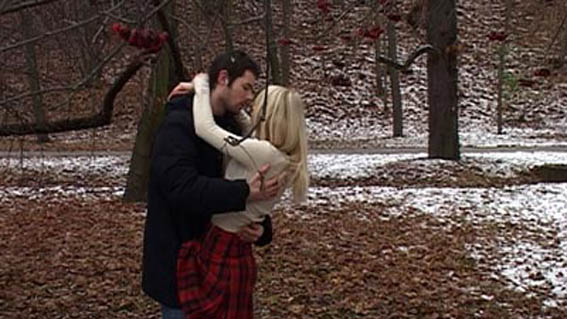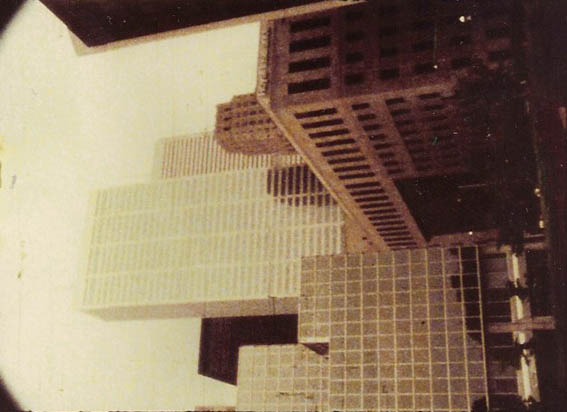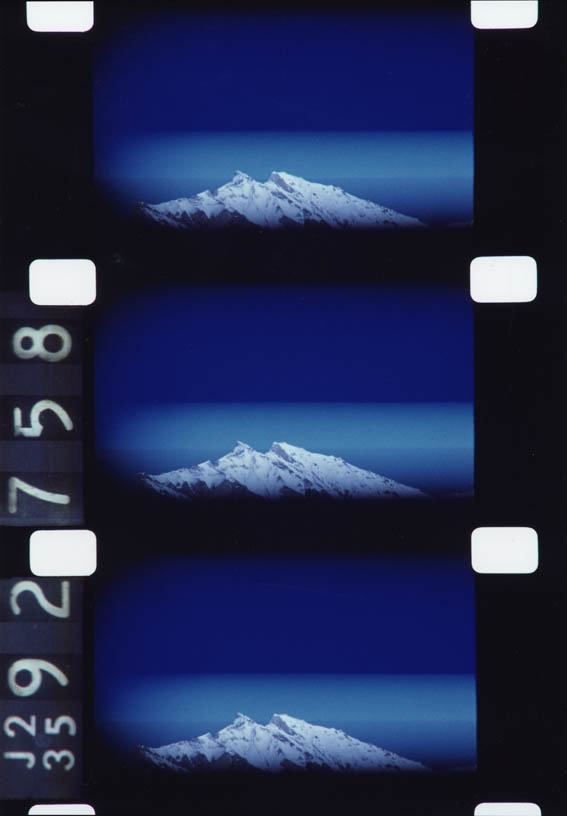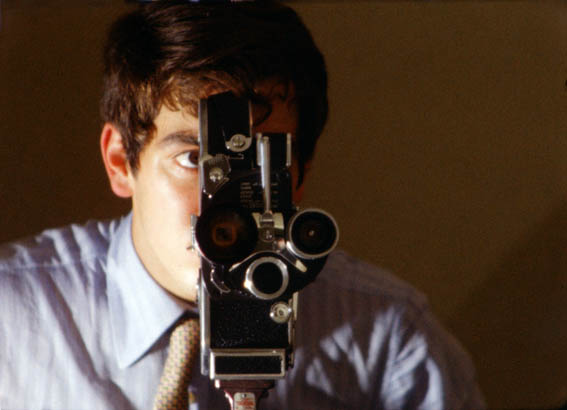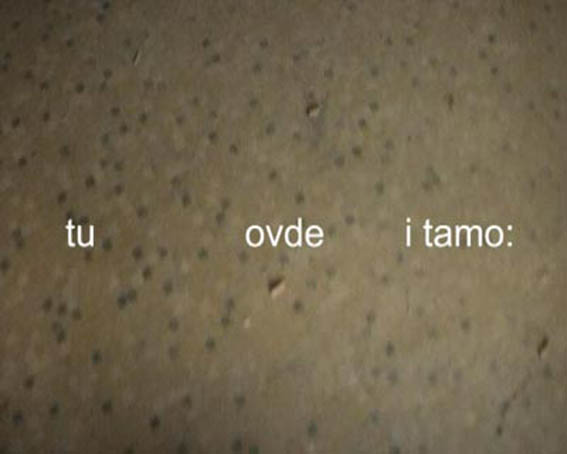TO THE WINGED DISTANCE: FILMS BY ROBERT BEAVERS
London Tate Modern2-25 February 2007The retrospective is structured in two parts: “To the Winged Distance”, six programmes of selected titles, will be followed on the last weekend by “My Hand Outstretched to the Winged Distance and Sightless Measure”, Robert Beavers’ complete cycle of eighteen films.
FOLLOW THIS LINK FOR THE INTRODUCTION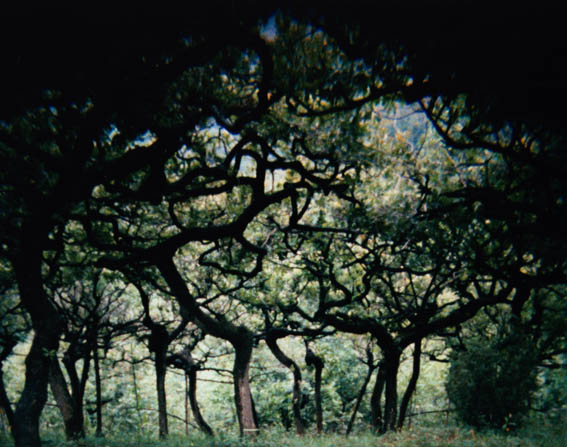 The Hedge Theatre (Robert Beavers, 1986-90/2002)
The Hedge Theatre (Robert Beavers, 1986-90/2002)
Introduction by Robert BeaversAMOR1980, 35mm film, colour, sound, 15 min.
AMOR is an exquisite lyric, shot in Rome and at the natural theatre of Salzburg. The recurring sounds of cutting cloth, hands clapping, hammering, and tapping underline the associations of the montage of short camera movements, which bring together the making of a suit, the restoration of a building, and details of a figure, presumably Beavers himself, standing in the natural theatre in a new suit, making a series of hand movements and gestures. A handsomely designed Italian banknote suggests the aesthetic economy of the film: the tailoring, trimming, and chiselling point to the editing of the film itself. (P. Adams Sitney, Film Comment)
WORK DONE1972/1999, 35mm film, colour, sound, 22 min.
Bracing in its simplicity,
Work done was shot in Florence and the Alps, and celebrates an archaic Europe. Contemplating a stone vault cooled by blocks of ice or the hand stitching of a massive tome or the frying of a local delicacy, Beavers considers human activities without dwelling on human protagonists. Like many of Beavers’ films,
Work done is based on a series of textural or transformative equivalences: the workshop and the field, the book and the forest, the mound of cobblestones and a distant mountain. (J. Hoberman, The Village Voice)
THE HEDGE THEATRE1986-90/2002, 35mm film, colour, sound, 19 min.
Beavers shot
The Hedge Theatre in Rome in the 1980s. It is an intimate film inspired by the Baroque architecture and stone carvings of Francesco Borromini and “St. Martin and the Beggar,” a painting by the Sienese painter Il Sassetta. Beavers’ montage contrasts the sensuous softness of winter light with the lush green growth brought by spring rains. Each shot and each source of sound is steeped in meaning and placed within the film’s structure with exacting skill to build a poetic relationship between image and sound. (Susan Oxtoby, Toronto International Film Festival)
Total running time c.80 min.
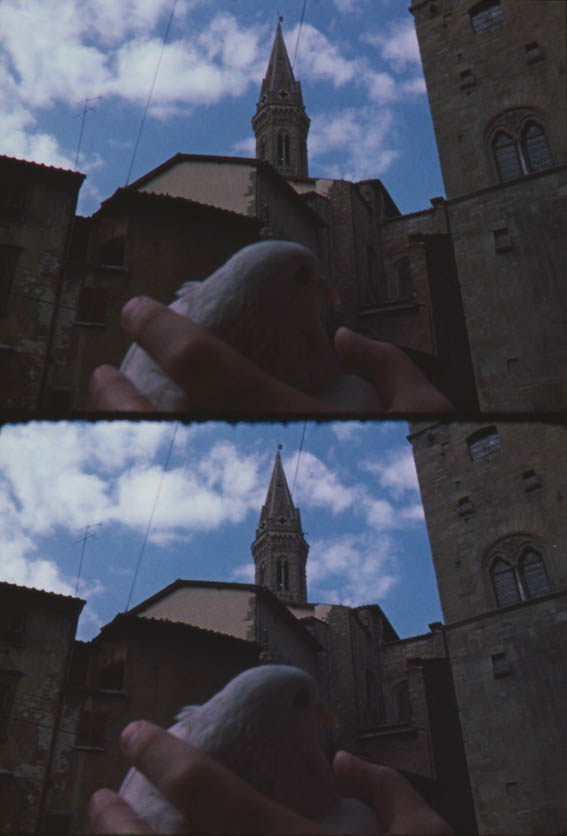 From the Notebook of … (Robert Beavers, 1971/1998)
From the Notebook of … (Robert Beavers, 1971/1998)
Introduction by Robert Beavers
FROM THE NOTEBOOK OF …1971/1998, 35mm film, colour, sound, 48 min.
From the Notebook of … was shot in Florence and takes as its point of departure Leonardo da Vinci’s notebooks and Paul Valéry’s essay on da Vinci’s process. These two elements suggest an implicit comparison between the treatment of space in Renaissance art and the moving image. The film marks a critical development in the artist’s work in that he repeatedly employs a series of rapid pans and upward tilts along the city’s buildings or facades, often integrating glimpses of his own face. As Beavers notes in his writing on the film, the camera movements are tied to the filmmakers’ presence and suggest his investigating gaze. (Henriette Huldisch, Whitney Museum of American Art)
Total running time c.70 min.
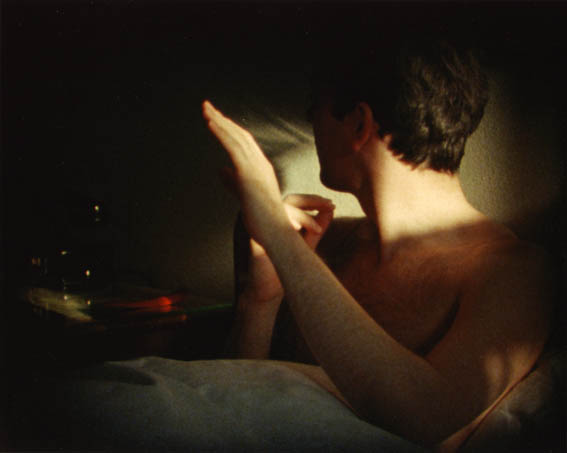 Sotiros (Robert Beavers, 1976-78/1996)
Sotiros (Robert Beavers, 1976-78/1996)
EARLY MONTHLY SEGMENTS1968-70/2002, 35mm film, colour, silent, 33 min.
Early Monthly Segments, filmed when Beavers was 18 and 19 years old, now forms the opening to his film cycle, “My Hand Outstretched to the Winged Distance and Sightless Measure.” It is a highly stylized work of self-portraiture, depicting filmmaker and companion Gregory J. Markopoulos in their Swiss apartment. The film functions as a diary, capturing aspects of home life with precise attention to detail, documenting the familiar with great love and transforming objects and ordinary personal effects into a highly-charged work of homoeroticism. (Susan Oxtoby, Toronto International Film Festival)
SOTIROS1976-78/1996, 35mm film, colour, sound, 25 min.
In
Sotiros, there is an unspoken dialogue and a seen dialogue. The first is held between the intertitles and the images; the second is moved by the tripod and by the emotions of the filmmaker. Both dialogues are interwoven with the sunlight’s movement as it circles the room, touching each wall and corner, detached and intimate. (Robert Beavers)
THE GROUND1993-2001, 35mm film, colour, sound, 20 min.
What lives in the space between the stones, in the space cupped between my hand and my chest? Filmmaker/stonemason. A tower or ruin of remembrance. With each swing of the hammer I cut into the image and the sound rises from the chisel. A rhythm, marked by repetition, and animated by variation; strokes of hammer and fist, resounding in dialogue. In this space which the film creates, emptiness gains a contour strong enough for the spectator to see more than the image – a space permitting vision in addition to sight. (Robert Beavers)
Total running time 78 min.
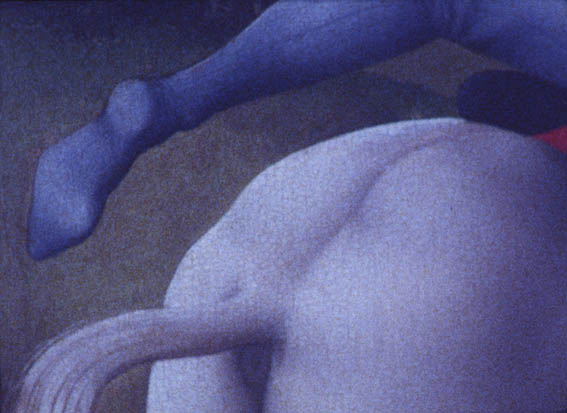 The Painting (Robert Beavers, 1972/1999)
The Painting (Robert Beavers, 1972/1999)
PALINODE1970/2001, 16mm film, colour, sound, 21 min.
In
Palinode, a disk-shaped matte continually shifting in and out of focus alternately blocks part of the image or contains it. Its respiratory rhythm matches operatic fragments of Wladimir Vogel’s ‘Wagadu’, as the camera studies a middle-aged male singer in Zurich, singing, eating, window shopping, meeting a young girl. The filmmaker told himself, “Don’t let yourself know what that film is about while you are making it.” (P. Adams Sitney, Film Comment)
DIMINISHED FRAME1970/2001, 16mm film, black-and-white and colour, sound, 24 min.
There is in
Diminished Frame a balance between a sense of the past seen in the views of West Berlin, filmed in black & white and a sense of the present in which I film myself showing how the colour is being created by placing filters in the camera’s aperture. It is the space of the city and of the filmmaker. I searched for signs of war’s aftermath and a few moments of ordinary existence. (Robert Beavers)
THE PAINTING1972/1999, 16mm film, colour, sound, 13 min.
The Painting intercuts shots of traffic navigating the old-world remnants of downtown Bern, Switzerland, with details from a 15th-century altarpiece, "The Martyrdom of St. Hippolytus". The painting shows the calm, near-naked saint in a peaceful landscape, a frozen moment before four horses tear his body to pieces while an audience of soigné nobles looks on; in the movie’s revised version, Beavers gives it a comparably rarefied psychodramatic jolt, juxtaposing shots of Gregory Markopoulos, bisected by shafts of light, with a torn photo of himself and the recurring image of a shattered windowpane. (J. Hoberman, The Village Voice)
Total running time 58 min.
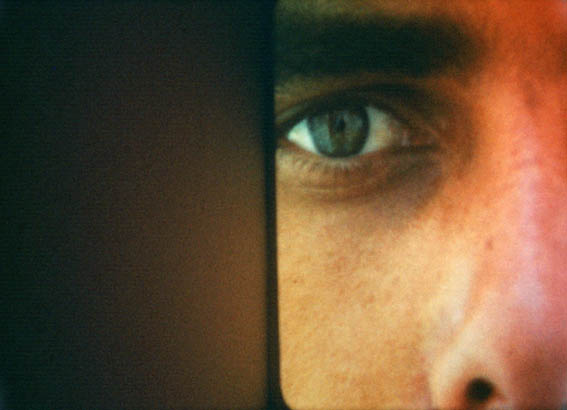 Still Light (Robert Beavers, 1979/2001)
Still Light (Robert Beavers, 1979/2001)
WINGED DIALOGUE and PLAN OF BRUSSELS1967/1968/2000, 16mm film, colour, sound, 21 min.
Winged Dialogue details with growing clarity the desperate beauty and sexuality of the body animated by its soul, essence blindly reaching out, touching, in brilliant patterns through and beyond those of the vanishing images, expressed vividly in the after-image on the mind, on the soul’s eye. (Tom Chomont, a note on
Winged Dialogue)
Shedding all traces of narrative in
Plan of Brussels, Beavers filmed himself in a hotel room, both at his work desk and lying naked on the bed, while in rapid rhythmic cutting, and sometimes in superimposition, the phantasmagoria of people he met in Brussels and images from the streets flood his mind. (P. Adams Sitney, Film Comment)
STILL LIGHT1970/2001, 16mm film, colour, sound, 25 min.
The first half of the film explores delicate nuances of lighting, colour and depth as Beavers shoots the face of a young man in various locales on the Greek island of Hydra, using a variety of customized masks and filters. The man’s face remains constant throughout, surrounded by iconic elements in the landscape, like a pulsating Renaissance portrait.
Still Light’s second half was shot in the London flat of art critic Nigel Gosling. The two halves of
Still Light bring to mind any number of structuralist binarisms: youth and age, creation and criticism, action and reflection, living landscape and mummified text. (Ed Halter, New York Press)
WINGSEED1985, 16mm film, colour, sound, 15 min.
A seed which floats in the air, a whirligig, a love charm. This magnificent landscape, both hot and dry, is far from sterile; rather, the heat and dryness produce a distinct type of life, seen in the perfect forms of the wild grass and seed pods, the herds of goats as well as in the naked figure. The torso, in itself, and more, the image which it creates in this light. The sounds of the shepherd’s signals and the flute’s phrase are heard. And the goats’ bells. Imagine the bell’s clapper moving from side to side with the goat’s movements like the quick side-to-side camera movements, which increase in pace and reach a vibrant ostinato. (Robert Beavers)
Total running time 61 min.
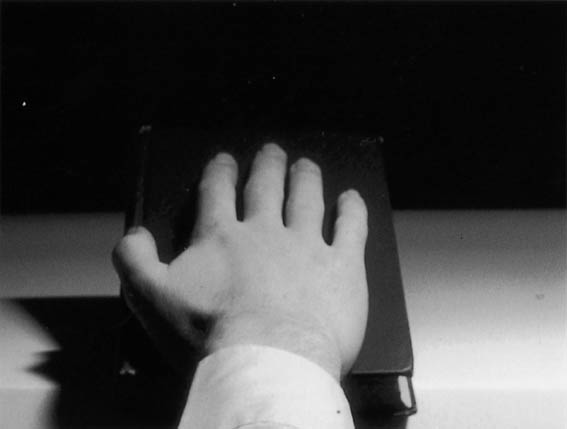 Ruskin (Robert Beavers, 1975/1997)
Ruskin (Robert Beavers, 1975/1997)
RUSKIN1975/1997, 35mm film, black-and-white and colour, sound, 45 min.
Ruskin visits the sites of John Ruskin’s work: London, the Alps and, above all, Venice, where the camera’s attention to masonry and the interaction of architecture and water mimics the author’s descriptive analysis of the “stones” of the city. The sound of pages turning and the image of a book, Ruskin’s ‘Unto This Last’, forcibly remind us that a poet’s perceptions, and in this case his political economy, are preserved and reawakened through acts of reading and writing. (P. Adams Sitney, Film Comment)
THE STOAS1991-97, 35mm film, colour, sound, 22 min.
The title refers to the colonnades that led to the shady groves of the ancient Lyceum, here remembered in shots of industrial arcades, bathed in golden morning light, as quietly empty of human figures as Atget’s survey photos. The rest of the film presents luscious shots of a wooded stream and hazy glen, portrayed with the careful composition of 19th century landscape painting. An ineffable, unnameable immanence flows through the images of
The Stoas, a kind of presence of the human soul expressed through the sympathetic absence of the human figure. (Ed Halter, New York Press)
Total running time 67 min.
Ruskin will be shown in a brand new print. The preservation of this film has been made possible by the generosity of Cineric Inc. and The Guild of St. George.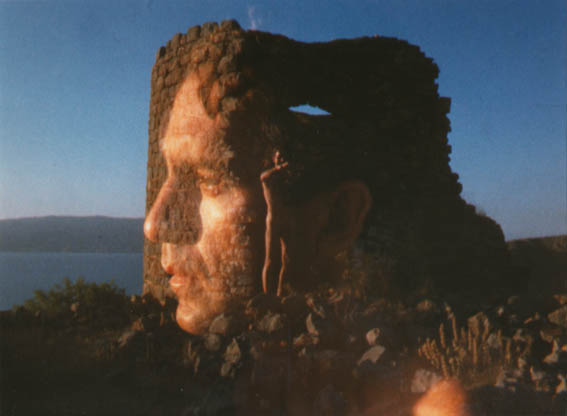 Winged Dialogue (Robert Beavers, 1967/2000)
Winged Dialogue (Robert Beavers, 1967/2000)
EARLY MONTHLY SEGMENTS1968-70/2002, 16mm film, colour, silent, 33 min.
Early Monthly Segments, filmed when Beavers was 18 and 19 years old, now forms the opening to his film cycle, “My Hand Outstretched to the Winged Distance and Sightless Measure.” It is a highly stylized work of self-portraiture, depicting filmmaker and companion Gregory J. Markopoulos in their Swiss apartment. The film functions as a diary, capturing aspects of home life with precise attention to detail, documenting the familiar with great love and transforming objects and ordinary personal effects into a highly-charged work of homoeroticism. (Susan Oxtoby, Toronto International Film Festival)
WINGED DIALOGUE and PLAN OF BRUSSELS1967/1968/2000, 16mm film, colour, sound, 21 min.
Winged Dialogue details with growing clarity the desperate beauty and sexuality of the body animated by its soul, essence blindly reaching out, touching, in brilliant patterns through and beyond those of the vanishing images, expressed vividly in the after-image on the mind, on the soul’s eye. (Tom Chomont, a note on
Winged Dialogue)
Shedding all traces of narrative in
Plan of Brussels, Beavers filmed himself in a hotel room, both at his work desk and lying naked on the bed, while in rapid rhythmic cutting, and sometimes in superimposition, the phantasmagoria of people he met in Brussels and images from the streets flood his mind. (P. Adams Sitney, Film Comment)
Total running time 54 min.
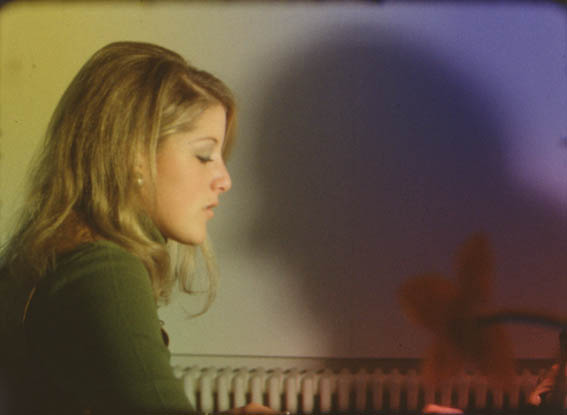 The Count of Days (Robert Beavers, 1969/2001)
The Count of Days (Robert Beavers, 1969/2001)
THE COUNT OF DAYS1969/2001, 16mm film, colour, sound, 21 min.
The film is seen as though upon and through the structure of its spiritual partitions. One might say that there are three elements or levels to the images: narrative, descriptive or analytic, and abstract.
The Count of Days is not an account so much as an accounting of the essence of the days in which three separate persons are related at points … a penetration through the masks and habits of these days to reveal the nature of the charade and the arena in which it is enacted. (Tom Chomont, Film Culture)
PALINODE1970/2001, 16mm film, colour, sound, 21 min.
In
Palinode a disk-shaped matte continually shifting in and out of focus alternately blocks part of the image or contains it. Its respiratory rhythm matches operatic fragments of Wladimir Vogel’s ‘Wagadu’, as the camera studies a middle-aged male singer in Zurich, singing, eating, window shopping, meeting a young girl. The filmmaker told himself, “Don’t let yourself know what that film is about while you are making it.” (P. Adams Sitney, Film Comment)
Total running time 42 min.
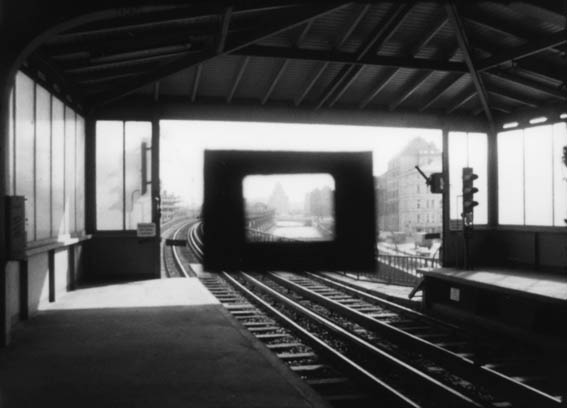 Diminished Frame (Robert Beavers, 1979/2001)
Diminished Frame (Robert Beavers, 1979/2001)
DIMINISHED FRAME1970/2001, 16mm film, black-and-white and colour, sound, 24 min.
There is in
Diminished Frame a balance between a sense of the past seen in the views of West Berlin, filmed in black & white and a sense of the present in which I film myself showing how the colour is being created by placing filters in the camera’s aperture. It is the space of the city and of the filmmaker. I searched for signs of war’s aftermath and a few moments of ordinary existence. (Robert Beavers)
STILL LIGHT1970/2001, 16mm film, colour, sound, 25 min.
The first half of the film explores delicate nuances of lighting, colour and depth as Beavers shoots the face of a young man in various locales on the Greek island of Hydra, using a variety of customized masks and filters. The man’s face remains constant throughout, surrounded by iconic elements in the landscape, like a pulsating Renaissance portrait.
Still Light’s second half was shot in the London flat of art critic Nigel Gosling. The two halves of
Still Light bring to mind any number of structuralist binarisms: youth and age, creation and criticism, action and reflection, living landscape and mummified text. (Ed Halter, New York Press)
Total running time 49 min.
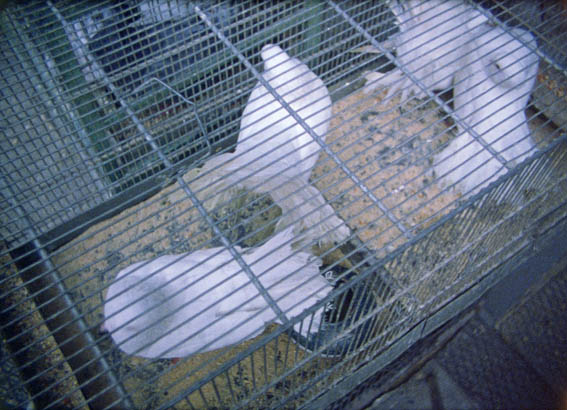 From the Notebook of … (Robert Beavers, 1980)
From the Notebook of … (Robert Beavers, 1980)
FROM THE NOTEBOOK OF …1971/1998, 35mm film, colour, sound, 48 min.
From the Notebook of … was shot in Florence and takes as its point of departure Leonardo da Vinci’s notebooks and Paul Valéry’s essay on da Vinci’s process. These two elements suggest an implicit comparison between the treatment of space in Renaissance art and the moving image. The film marks a critical development in the artist’s work in that he repeatedly employs a series of rapid pans and upward tilts along the city’s buildings or facades, often integrating glimpses of his own face. As Beavers notes in his writing on the film, the camera movements are tied to the filmmakers’ presence and suggest his investigating gaze. (Henriette Huldisch, Whitney Museum of American Art)
THE PAINTING1972/1999, 16mm film, colour, sound, 13 min.
The Painting intercuts shots of traffic navigating the old-world remnants of downtown Bern, Switzerland, with details from a 15th-century altarpiece, "The Martyrdom of St. Hippolytus". The painting shows the calm, near-naked saint in a peaceful landscape, a frozen moment before four horses tear his body to pieces while an audience of soigné nobles looks on; in the movie’s revised version, Beavers gives it a comparably rarefied psychodramatic jolt, juxtaposing shots of Gregory Markopoulos, bisected by shafts of light, with a torn photo of himself and the recurring image of a shattered windowpane. (J. Hoberman, The Village Voice)
Total running time 61 min.
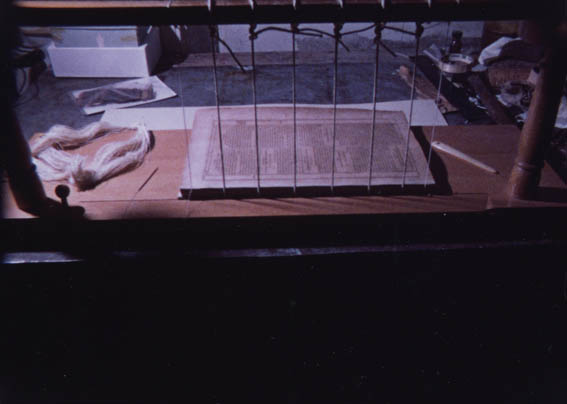 Work done (Robert Beavers, 1972/1999)
Work done (Robert Beavers, 1972/1999)
WORK DONE1972/1999, 35mm film, colour, sound, 22 min.
Bracing in its simplicity,
Work done was shot in Florence and the Alps, and celebrates an archaic Europe. Contemplating a stone vault cooled by blocks of ice or the hand stitching of a massive tome or the frying of a local delicacy, Beavers considers human activities without dwelling on human protagonists. Like many of Beavers’ films,
Work done is based on a series of textural or transformative equivalences: the workshop and the field, the book and the forest, the mound of cobblestones and a distant mountain. (J. Hoberman, The Village Voice)
RUSKIN
1975/1997, 35mm film, black-and-white and colour, sound, 45 min.
Ruskin visits the sites of John Ruskin’s work: London, the Alps and, above all, Venice, where the camera’s attention to masonry and the interaction of architecture and water mimics the author’s descriptive analysis of the “stones” of the city. The sound of pages turning and the image of a book, Ruskin’s ‘Unto This Last’, forcibly remind us that a poet’s perceptions, and in this case his political economy, are preserved and reawakened through acts of reading and writing. (P. Adams Sitney, Film Comment)
Total running time 67 min.
Ruskin will be shown in a brand new print. The preservation of this film has been made possible by the generosity of Cineric Inc. and The Guild of St. George.
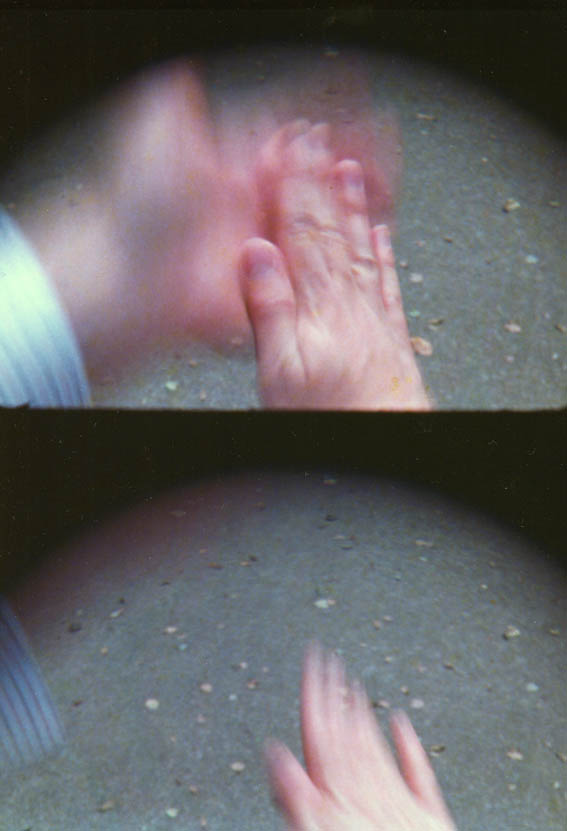 AMOR (Robert Beavers, 1980)
AMOR (Robert Beavers, 1980)
My Hand Outstretched: Programme 6
SOTIROS
1976-78/1996, 35mm film, colour, sound, 25 min.
In Sotiros, there is an unspoken dialogue and a seen dialogue. The first is held between the intertitles and the images; the second is moved by the tripod and by the emotions of the filmmaker. Both dialogues are interwoven with the sunlight’s movement as it circles the room, touching each wall and corner, detached and intimate. (Robert Beavers)
AMOR
1980, 35mm film, colour, sound, 15 min.
AMOR is an exquisite lyric, shot in Rome and at the natural theatre of Salzburg. The recurring sounds of cutting cloth, hands clapping, hammering, and tapping underline the associations of the montage of short camera movements, which bring together the making of a suit, the restoration of a building, and details of a figure, presumably Beavers himself, standing in the natural theatre in a new suit, making a series of hand movements and gestures. A handsomely designed Italian banknote suggests the aesthetic economy of the film: the tailoring, trimming, and chiselling point to the editing of the film itself. (P. Adams Sitney, Film Comment)
Total running time 40 min.
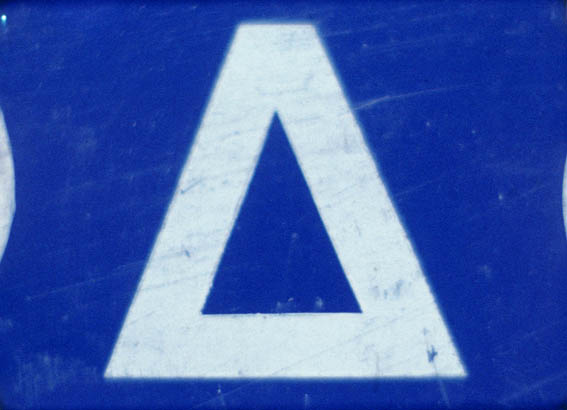 Efpsychi (Robert Beavers, 1983/1996)
Efpsychi (Robert Beavers, 1983/1996)
My Hand Outstretched: Programme 7
Ευψυχι (Efpsychi)
1983/1996, 35mm film, colour, sound, 20 min.
The details of the young actor’s face – his eyes, eyebrows, earlobe, chin, etc. – are set opposite the old buildings in the market quarter of Athens, where every street is named after a classic ancient Greek playwright. In this setting of intense stillness, sometimes interrupted by sudden sounds and movements in the streets, he speaks a single word, “teleftea”, meaning the last (one), and as he repeats this word, it moves differently each time across his face and gains another sense from one scene to the next, suggesting the uncanny proximity of eroticism, the sacred and chance. (Robert Beavers)
WINGSEED
1985, 35mm film, colour, sound, 15 min.
A seed which floats in the air, a whirligig, a love charm. This magnificent landscape, both hot and dry, is far from sterile; rather, the heat and dryness produce a distinct type of life, seen in the perfect forms of the wild grass and seed pods, the herds of goats as well as in the naked figure. The torso, in itself, and more, the image which it creates in this light. The sounds of the shepherd’s signals and the flute’s phrase are heard. And the goats’ bells. Imagine the bell’s clapper moving from side to side with the goat’s movements like the quick side-to-side camera movements, which increase in pace and reach a vibrant ostinato. (Robert Beavers)
THE HEDGE THEATRE
1986-90/2002, 35mm film, colour, sound, 19 min.
Beavers shot The Hedge Theatre in Rome in the 1980s. It is an intimate film inspired by the Baroque architecture and stone carvings of Francesco Borromini and “St. Martin and the Beggar,” a painting by the Sienese painter Il Sassetta. Beavers’ montage contrasts the sensuous softness of winter light with the lush green growth brought by spring rains. Each shot and each source of sound is steeped in meaning and placed within the film’s structure with exacting skill to build a poetic relationship between image and sound. (Susan Oxtoby, Toronto International Film Festival)
Total running time 54 min.
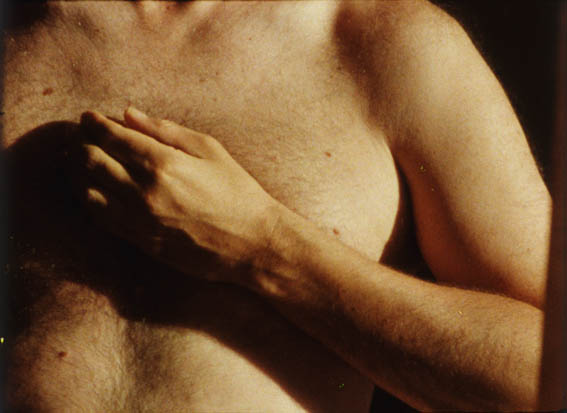 The Ground (Robert Beavers, 1993-2001)
The Ground (Robert Beavers, 1993-2001)
My Hand Outstretched: Programme 8
THE STOAS
1991-97, 35mm film, colour, sound, 22 min.
The title refers to the colonnades that led to the shady groves of the ancient Lyceum, here remembered in shots of industrial arcades, bathed in golden morning light, as quietly empty of human figures as Atget’s survey photos. The rest of the film presents luscious shots of a wooded stream and hazy glen, portrayed with the careful composition of 19th century landscape painting. An ineffable, unnameable immanence flows through the images of The Stoas, a kind of presence of the human soul expressed through the sympathetic absence of the human figure. (Ed Halter, New York Press)
THE GROUND
1993-2001, 35mm film, colour, sound, 20 min.
What lives in the space between the stones, in the space cupped between my hand and my chest? Filmmaker/stonemason. A tower or ruin of remembrance. With each swing of the hammer I cut into the image and the sound rises from the chisel. A rhythm, marked by repetition, and animated by variation; strokes of hammer and fist, resounding in dialogue. In this space which the film creates, emptiness gains a contour strong enough for the spectator to see more than the image – a space permitting vision in addition to sight. (Robert Beavers)
Total running time 42 min.
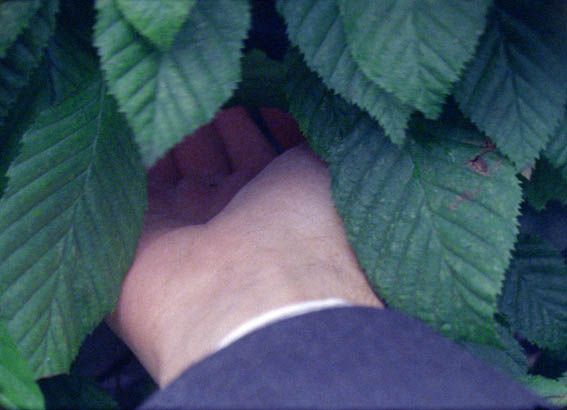 AMOR (Robert Beavers, 1980)
AMOR (Robert Beavers, 1980)All screenings at
Starr Auditorium
Tate Modern, Bankside, London, SE1 9TG
Nearest Tube: Southwark / London Bridge / Blackfriars
MAP OF AREATickets: £5, booking recommended
Season Ticket: £25
Box Office: 020 7887 8888
www.tate.org.uk

